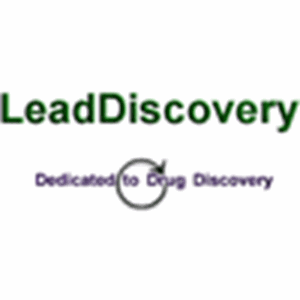
Development of Glycogen synthase kinase-3 (GSK-3) inhibitors by GlaxoSmithKline and by Johnson & Johnson (Target of the Month, TherapeuticAdvances, September, 2003)

Summary
Proof of concept studies have accumulated supporting the targeting of glycogen synthase kinase-3 (GSK-3) for the treatment of diabetes and CNS conditions. Now inhibitors are emerging as therapeutic candidatesSince the mid-1990s there has been a near exponential rise in the level of glycogen synthase kinase-3 (GSK-3) related research. Consequently the therapeutic potential of GSK-3 inhibitors has become a major area of pharmaceutical interest. To mark this surge in interest, LeadDiscovery have recently produced a full report "Glycogen synthase kinase 3 (GSK-3) inhibitors:Proof of concept and therapeutic opportunities for the treatment of diabetes, Alzheimer's disease, stroke & bipolar disorders" (click here for access).
The inhibition of GSK-3 offers considerable potential for the treatment of diabetes since this lowers plasma glucose levels increases insulin sensitivity and may also be insulinotrophic. Likewise inhibitors of GSK3 limit neuronal apoptosis and neurological decline in stroke patients and may therefore be of use in this largely unmet condition. Another growth area, Alzheimerxs Disease also represents a target indication for GSK-3 inhibitors since evidence points to a role for this enzyme in the accumulation and toxicity of beta amyloid. Finally diverse mood stabilizers also inhibit GSK-3 activity suggesting that bipolar disorder represents a further indication for this therapeutic class.
Despite the promise of GSK-3 inhibitors in multiple, serious and unmet clinical conditions, at the time of LeadDiscovery's report only Vertex and Chiron had announced that they were developing GSK-3 inhibitors. Novo Nordisk and GlaxoSmithKline were also involved in the field, and the latter have been responsible for the development of two structurally distinct compounds, SB-216763 and SB-415286, that inhibit GSK-3 with nanomolar potency.
Since then GlaxoSmithKline researchers have designed a pharmacophore for GSK-3 inhibitors against which they screened an in house database thereby identifying a pyridazine which inhibited GSK-3 with sub-micromolar potency. Simplification of this lead produced a series of pyrazolo [3,4-b]pyridines and pyrazolo [3,4-b]pyridazines with IC50s of 56 and 4nM respectively. This optimization in potency was suggested to be to be due to a hydrogen bond between the N-6 position of the inhibitor and a water lattice. Researchers have since suggested that it is possible to displace the structural waters from the GSK-3 binding site via insertion of a suitably functionalised group at the 6-position of the pyrazolo [3,4-b ]pyridine nucleus. In order to test this hypothesis this group have now performed a SAR study on a small set of functionalized 6-aryl pyridines. Modification of the template to incorporate functionality at the 6-position did indeed produce a novel series of GSK-3 inhibitors with potencies dropping to sub-nanomolar levels. This study increases our knowledge of structural requirement needed for the inhibition of GSK-3 and it is hoped that further optimization of this series will lead to the development of clinical candidates.
In a second study highlighted in a recent edition of our tracking service DailyUpdates, researchers at Johnson & Johnson have developed a series of macrocyclic bisindolylmaleimides which also inhibit GSK-3. Like the GlaxoSmithKline molecules this series is highly potent with IC50 values as low as 4nM. An interesting difference between this series and GlaxoSmithKlinexs molecules is that they also inhibit protein kinase C. Moreover they demonstrated a selectivity of 10-100-fold for beta isoforms of this enzyme as compared to other isoforms. This is particularly interesting since the beta isoform is induced in response to hyperglycemia in cardiac, aortic, renal, and retinal tissues, and is associated with diabetic complications, particularly retinopathy, angiopathy, nephropathy, macular edema, neuropathy, and cardiomyopathy. Thus the GSK-3 inhibiting component of this molecule could improve glucose handling, while the PKC inhibiting activity could limit diabetic complications.
The pharmaceutical development of GSK-3 inhibitors is therefore advancing, and the next few years hold promise as these series and others currently in development approach the clinic.
addapted from Target of the Month, Sept, 2003
